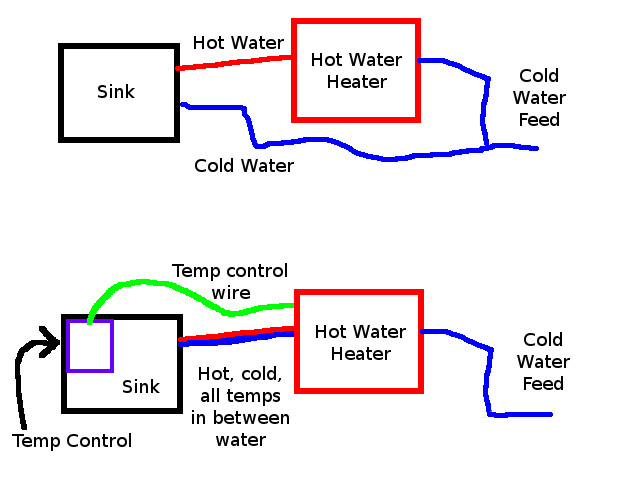It occurred to me that combining really cold water with really hot water to get warm water is inefficient. Why not have a device that supplies water to the faucet at the exact temperature that I want? Does such a device exist?
I'm looking for something that allows me to connect a cold water supply line to a "heater" and then to a faucet (special, regular, whatever gets the job done). This device would then have a temperature control (ideally next to the faucet) so it could vary the temperature that comes out of the "heater" from cold (ideally as cold as the supply line) all the way to hot (say 120F or so).
I'm looking for something that allows me to connect a cold water supply line to a "heater" and then to a faucet (special, regular, whatever gets the job done). This device would then have a temperature control (ideally next to the faucet) so it could vary the temperature that comes out of the "heater" from cold (ideally as cold as the supply line) all the way to hot (say 120F or so).
































![MEISTERFAKTUR drain snake 2.0 [50 FT] - with drill attachment - Ideal plumbing snake for sink and drain unblocking - Solid drain auger for real DYIs! (50 FT - 1/4 inch)](https://m.media-amazon.com/images/I/41VwmTiOsgL._SL500_.jpg)


















